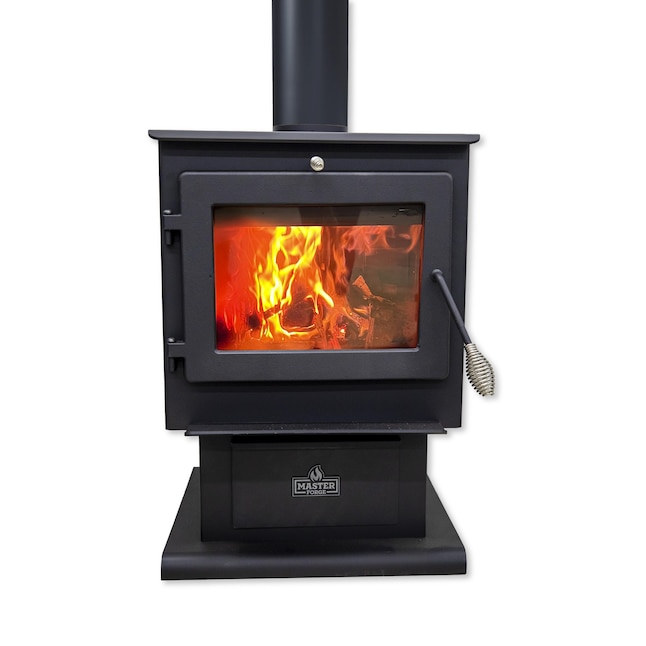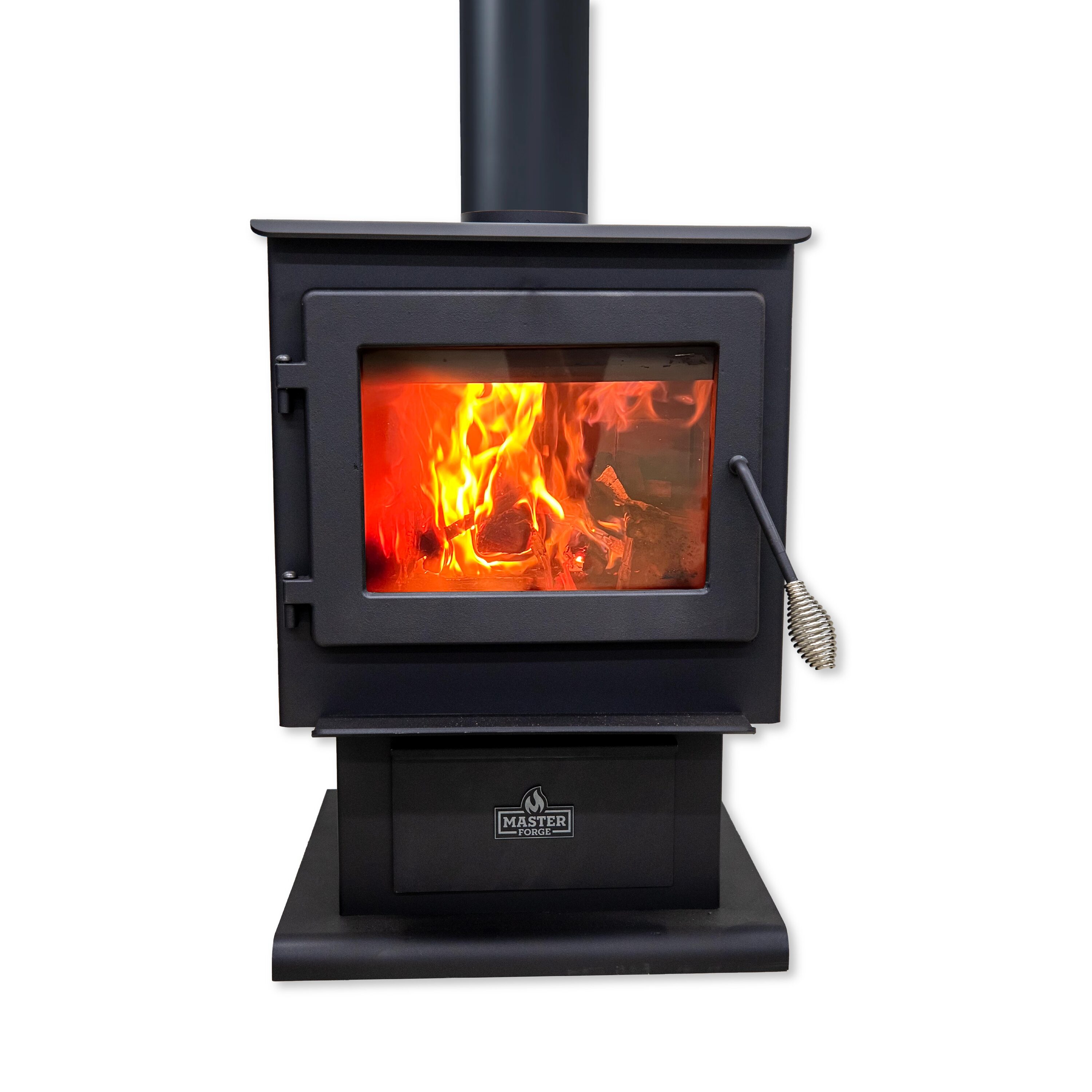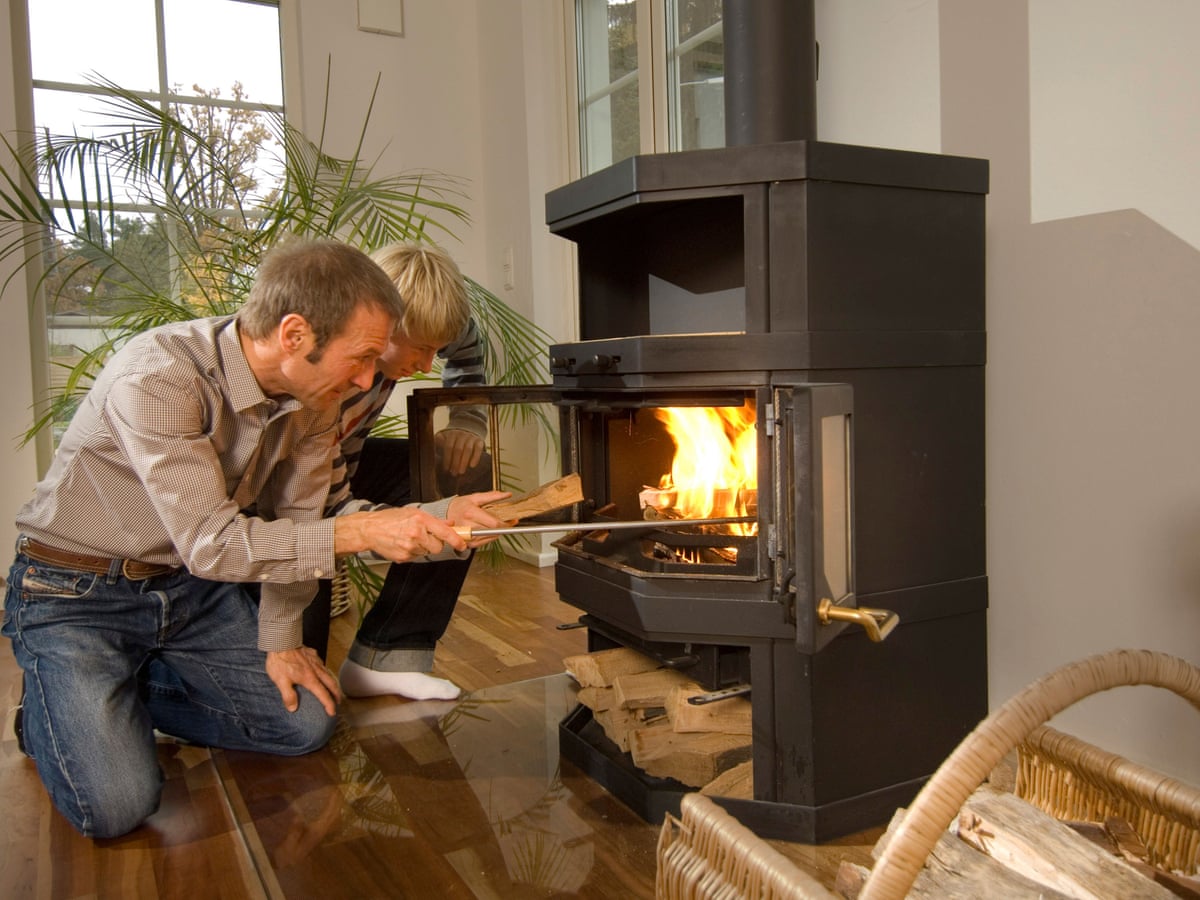To use a wood burning stove, open both air vents fully when lighting. Crack the door slightly for additional airflow.
Properly manage the air vents for efficient fuel burning. Wood burning stoves are an excellent and cost-effective way to heat your home during the colder months. Whether you’re new to using a wood stove or looking to improve your technique, understanding the proper steps for building and maintaining a fire is key.
By following these simple guidelines, you can ensure that your wood burning stove operates efficiently and effectively, keeping your space warm and cozy without wasting fuel. Let’s dive into the step-by-step process of how to use a wood burning stove effectively for optimal warmth and comfort in your home.


Credit: www.lowes.com
- Understanding The Basics Of Wood Burning Stoves
- Mastering The Art Of Starting And Maintaining A Fire
- Efficient Operation And Control Of A Wood Burning Stove
- Tips For Using A Wood Burning Stove
- Maintenance And Cleaning Of Wood Burning Stoves
- Frequently Asked Questions For How To Use A Wood Burning Stove
- Conclusion
Understanding The Basics Of Wood Burning Stoves
Wood burning stoves are efficient and environmentally friendly heating options that have gained popularity for their rustic charm and effective warmth. Understanding how to properly use a wood burning stove is essential for safe and efficient operation.
Choosing The Right Wood Burning Stove
- Consider the size of your space
- Ensure the stove meets local regulations
- Look for energy-efficient models
Safety Precautions
- Keep flammable items away from the stove
- Install a carbon monoxide detector
- Regularly inspect and clean the chimney
Mastering The Art Of Starting And Maintaining A Fire
In preparing to light a fire in your wood-burning stove, ensure to gather dry kindling and seasoned firewood.
- Arrange the kindling in a crisscross pattern inside the stove.
- Place smaller pieces of firewood on top of the kindling in a teepee shape.
- Leave space between the wood pieces for airflow.
When ready to light the fire, use a long-reach lighter or matches to ignite the kindling at multiple points.
- Avoid using accelerants like gasoline or lighter fluid.
- Keep the stove door slightly ajar initially to allow for proper airflow.
- Once the fire is established, close the door to control ventilation.
To keep the fire burning efficiently, monitor and adjust the air vents on your wood-burning stove.
| Primary Vent | Secondary Vent |
|---|---|
| Located at the bottom of the stove for primary airflow control. | Situated above the glass for secondary air adjustment. |
| Regulate the fire intensity by adjusting the primary vent. | Use the secondary vent for additional airflow control. |
Efficient Operation And Control Of A Wood Burning Stove
Wood burning stoves are a wonderful way to bring warmth and ambiance into your home. However, to ensure efficient operation and control, it’s crucial to understand how to adjust the damper and use the air vents effectively. By mastering these techniques, you can maximize the performance of your wood burning stove, making it both cost-effective and environmentally friendly.
Adjusting The Damper
To regulate the airflow and control the burn rate of your wood burning stove, adjusting the damper is essential. Simply put, the damper helps in managing the combustion process by controlling the amount of air that enters the stove. It’s located either above or below the firebox, and by adjusting it correctly, you can optimize the burning process.
Using The Air Vents
Another crucial aspect of efficient wood burning stove operation is the utilization of air vents. Most stoves are equipped with both primary and secondary air vents, which play a key role in regulating the combustion process. Opening the vents allows more air to enter, promoting a hotter and more vigorous fire, while closing them will reduce airflow and slow down the burn rate.

Credit: www.theguardian.com
Tips For Using A Wood Burning Stove
Using a wood burning stove is a great way to add warmth and coziness to your home. However, it’s important to use it correctly in order to maximize its efficiency and ensure safety. Here are some key tips to keep in mind when using a wood burning stove:
Selecting The Right Fuel
Choosing the right fuel for your wood burning stove is essential for efficient and clean burning. It’s recommended to use hardwoods such as oak, maple, or birch, as they burn more slowly and produce more heat compared to softwoods like pine. Hardwoods also tend to create less creosote buildup in your chimney, reducing the risk of chimney fires.
When selecting the size of your firewood, opt for pieces that are approximately 3-6 inches in diameter. This allows for adequate airflow around the wood, promoting efficient combustion. It’s also important to properly store your firewood in a dry location to ensure it burns well.
Keeping The Doors Closed
One common mistake when using a wood burning stove is leaving the doors open. This can result in drafts that impact the stove’s performance and efficiency. It’s crucial to keep the doors closed while the fire is burning to maintain a controlled airflow and maximize the heat output.
If you need to tend to the fire or add more wood, briefly open the door and quickly close it to minimize heat loss. Avoid leaving the door open for extended periods as this can cause smoke to enter your living space and potentially be a safety hazard.
Additional Considerations
There are a few extra considerations to keep in mind when using a wood burning stove:
- Clean the ashes regularly: Remove the ashes from the firebox once they have cooled down. A small amount of ash can help insulate the fire, but too much can restrict airflow and decrease efficiency.
- Use proper ventilation: Ensure that your home is well-ventilated to prevent the buildup of carbon monoxide. Open a window slightly or use a carbon monoxide detector to maintain a safe environment.
- Regular maintenance: Schedule routine inspections and cleanings for your wood burning stove to ensure it’s in good working condition. This will help you identify any potential issues and keep the stove operating at its best.
By following these tips, you can safely and effectively use your wood burning stove to create a warm and inviting atmosphere in your home.
Maintenance And Cleaning Of Wood Burning Stoves
To maintain and clean a wood-burning stove, regularly remove ash and residue, clean the glass door, and inspect the chimney for creosote buildup. Ensure proper ventilation and monitor the airflow. Use seasoned firewood and avoid burning hazardous materials. Regular maintenance ensures safe and efficient use of the wood-burning stove.
Cleaning Up After The Fire
Once you have enjoyed the warmth and ambiance of a roaring fire in your wood burning stove, it’s important to properly clean up the aftermath. Cleaning up after each fire not only helps maintain the efficiency of your stove but also ensures its longevity.
Start by waiting for the stove to cool down completely. Using heat-resistant gloves, remove all ashes and debris from the firebox and dispose of them in a metal container. Remember to wait at least 24 hours before discarding the ashes to avoid any potential fire hazards. Once the ashes have been safely removed, use a soft brush or vacuum to clean the interior surfaces of the stove, including the baffle, flue pipes, and glass door. Be sure to avoid using harsh chemicals or abrasive materials that can damage the stove’s finish.
Next, don’t forget to clean the stove’s glass door. Over time, the glass can become coated with soot and residue, affecting the view of your beautiful fire. Use a specially formulated glass cleaner or a mixture of vinegar and water to remove any buildup. Apply the cleaner to a soft cloth or newspaper and gently wipe down the glass, ensuring a streak-free finish.
Regular Maintenance
In addition to cleaning up after each fire, regular maintenance is crucial to keep your wood burning stove in optimal condition. Here are some essential tasks to include in your maintenance routine:
- Inspect the gaskets: Check the gaskets around the stove’s doors and replace them if they show signs of wear and tear. Properly sealed gaskets help maintain airtightness and prevent heat loss.
- Clean the chimney: Regularly inspect and clean the chimney to remove any creosote buildup, which can cause a fire hazard. Consider hiring a professional chimney sweep for a thorough cleaning.
- Check the airflow: Ensure that the air vents and dampers are functioning properly and not blocked by debris. Proper airflow is essential for efficient combustion.
- Inspect the stovepipe: Examine the stovepipe for any signs of corrosion, cracks, or leaks. Replace any damaged sections to maintain the stove’s safety and efficiency.
- Check the stove’s exterior: Inspect the exterior of the stove for any signs of damage, such as rust or cracks. Address these issues promptly to prevent further deterioration.
By following these maintenance guidelines, you can enjoy the warmth and comfort of your wood burning stove for years to come. Regular cleaning and upkeep not only improve the stove’s efficiency but also ensure its safe operation.

Credit: www.amazon.com
Frequently Asked Questions For How To Use A Wood Burning Stove
How Do You Use A Wood Burning Stove For The First Time?
To use a wood burning stove for the first time, open the air vents fully. Light the fire and gradually adjust the bottom vent for efficient burning.
What Vents Should Be Open On A Wood Burner?
When lighting your wood burner, open both air vents fully. Crack the door slightly for additional airflow. Once fire is established, gradually close the bottom vent.
How Do You Use A Wood Burning Stove Efficiently?
To use a wood burning stove efficiently, start with small kindling, then add larger wood pieces. Adjust the damper and air vents for proper airflow. Close the door once the fire is established and manage the vents to control the burn rate.
Regular maintenance ensures optimal performance.
How Do You Control A Wood Burning Stove?
To control a wood burning stove, adjust the air vents above and below the glass. The bottom vent is the primary vent, while the top vent is the secondary vent. By controlling the air supply, you can regulate the burning speed of the fuel.
Leave the door slightly open to help with the flue pull.
How Do You Use A Wood Burning Stove For The First Time?
To use a wood burning stove for the first time, start by opening both air vents fully and cracking the door open slightly to provide additional air flow through the firebox. Once the fire is established, close the door and gradually close down the bottom air vent.
Conclusion
Mastering the use of a wood-burning stove is essential for efficient heating and safe operation. By carefully tending to the fire, adjusting the damper, and properly maintaining your stove, you can create a warm and cozy atmosphere in your home.
With these techniques and regular maintenance, you can enjoy the benefits of a wood-burning stove for years to come.